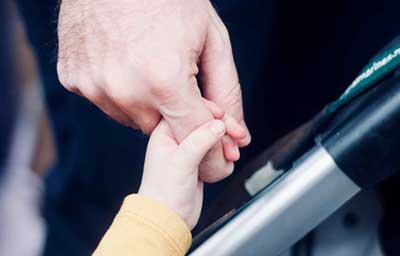
Teaching Your Child With Autism To Stay With You In The Community (Part 2)
Going out to different places in the community is common activity that most families enjoy. Places in the community could include the parks and playground, shopping malls, supermarkets, etc. However, going out to the community may be challenging for families with children with autism, particularly if the child has a tendency of wandering off.
Previously, we published a blog article on ‘How To Teach Your Child With Autism To Stay With You In The Community‘ where we provided some tips and strategies in planning your community trip and preparing your child. In this article, we break down the steps on how you can teach your child with autism the skill of staying with you in the community. As a matter of fact, these strategies can be applied with typical children as well!
Set a clear expectation on how your child should stay with you
In setting expectations for your child with autism, it would be important to take into consideration their current age, language skills, level of understanding, as well as the spectrum of their autism. There are various ways in which your child can stay with you, such as:
- Child to hold adult’s hand at all times
- Child to walk next to adult with adult’s hand on child’s shoulders
- Child to walk next to/close to adult without holding hands
Utilise visuals to communicate expectation to your child
Once you have decided on the expectations for your child, it would be important to communicate the expectation to your child with autism in a manner in which they understand best. We recommend utilising visual strategies to supplement verbal instructions, as visuals provide a clear example of what your child should do. Some examples of visual strategies that you can utilise include:
- Social Story on Staying With Adult
- Video Model of child staying with adult
- Visual of holding hands

Begin by practising skill in a safe environment
Before your child is able to stay with you in the community, we would recommend teaching the skill and practising it with your child within a safe and enclosed environment, in order to set your child up to be successful and to prevent your child from wandering off. To do so, you could start the practice within the home environment, such as in the bedroom or living room.
- Communicate to your child about the expectation to stay with you, utilising one of the visual strategies above
- Practice the skill with your child for a short duration to set your child up to be successful (e.g. tell your child to stay with you, hold his/her hand while walking around the room for 15 seconds)
- When your child stays with your nicely, immediately reinforce/reward your child
Gradually increase the duration in which your child is required to stay with you
Once your child has successfully learned to stay with you in the home environment for a short amount of time (e.g. 15 seconds), you can gradually increase the duration in small amounts (e.g. 30 seconds, 45 seconds, 1 minute, etc.). Always remember to reinforce/reward your child after each practice! The more you practice this skill with your child, the more established the skill will become!
Practice the skill in different environments
When your child is able to successfully and consistently stay with you within the home environment, it is time to begin the practice in different environments. Work on 1 new environment at a time. While practicing in a new environment, start with shorter durations before gradually increasing the timeframe, and always remember to reinforce/reward your child still when he/she stays with you nicely! You can practice in different environments such as:
- In the porch
- At the park or playground
- Supermarkets
- Shopping mall
Practice the skill with different people
It would also be important for your child to practice staying with different people whom you trust, such as helpers, grandparents, and any other trusted adults/caregivers. This would be particularly important if your child’s primary caregiver is someone other than yourself.
The above ideas are some of the basic guidelines to help assist your child to stay with you when the family is out in the community. As each child with autism is different, these suggestions will need to be individualized to further meet the different requirements of each child.
We wish you the very best in planning and having a great and SAFE family time! Please do not hesitate to contact us at (03) 20940421 or at enquiries@autismmalaysia.com should you need anymore assistance.